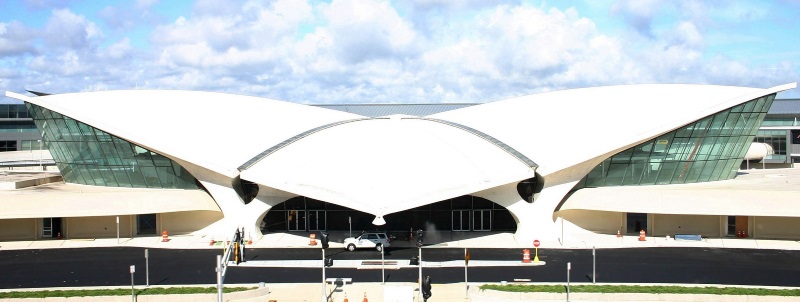Adaptive reuse has helped New York reclaim and transform one of its iconic buildings.
Trans World Airlines (TWA) may be no more, but part of the terminal that superstar architect Eero Saarinen designed for the company remains a travel hub, now as a hotel.
When the TWA Flight Center at New York’s John F. Kennedy International Airport opened in 1962, it was hailed as a masterpiece of futurist architecture, a harbinger of the jet age, with its expansive “gull-wing” roof structure and glass walls.
During its time as an airline terminal, millions of international travelers passed under its soaring roofline, and in 1994, the City of New York designated the structure a historic landmark. After TWAs dissolution in 2001, however, the building was in jeopardy. It sat unused until 2008, when airline JetBlue hired international architecture firm Gensler to adapt it for use by the carrier’s growing population of passengers. Gensler’s architects demolished peripheral parts of the structure to allow for exapansion but preserved the iconic wing-shaped head house, placing the new sections around and behind it.
While JetBlue used the new sections of the building, ongoing debate about the future of the terminal’s head house kept it empty until 2015, when the state announced that it would be transformed into the TWA Hotel at JFK. The hotel opened on May 15, 2019, with 505 guest rooms, meeting space, and a large observation deck where guests can observe the operations of one of the nation’s busiest airports.
This post first ran in 2019.


